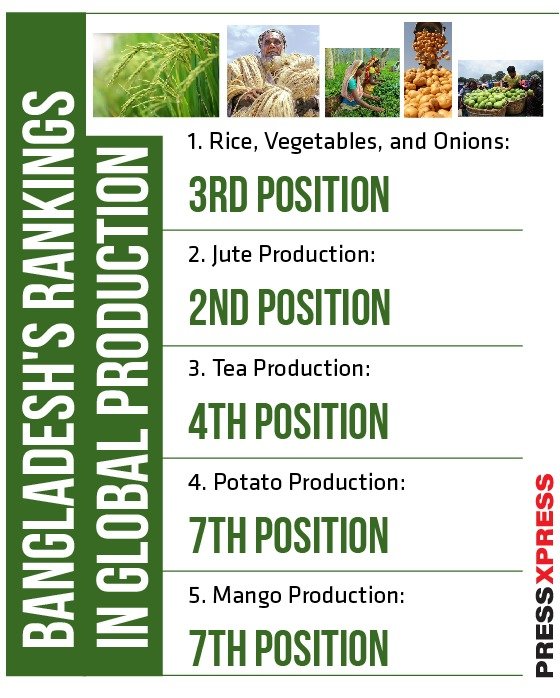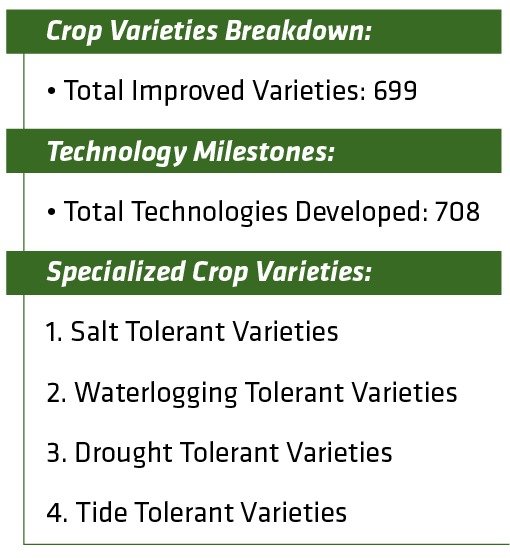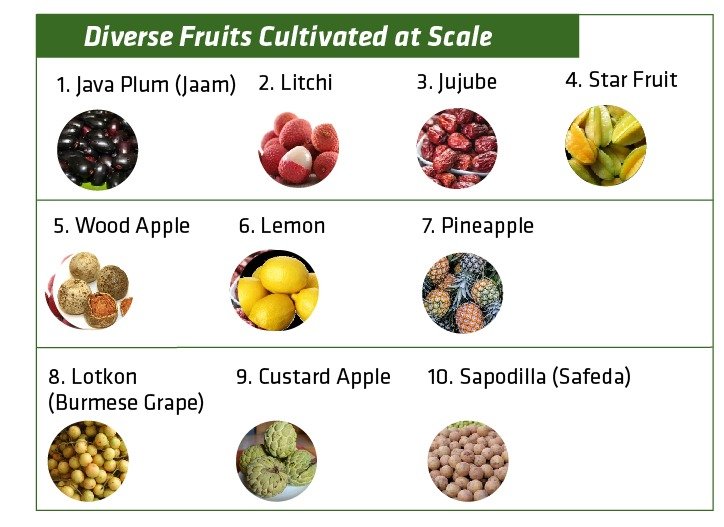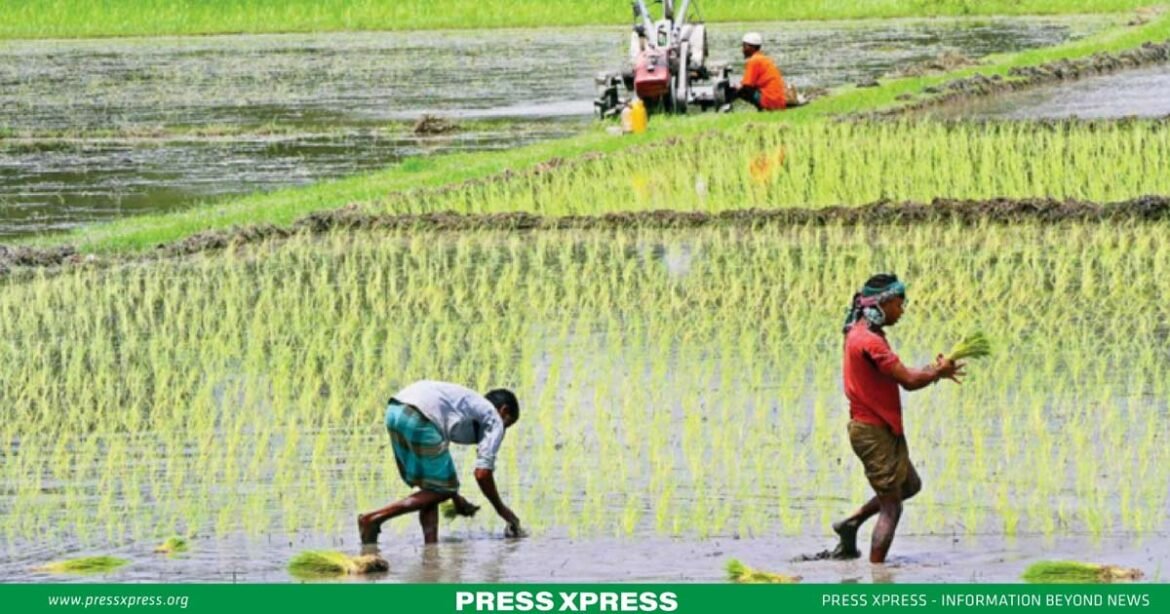In order to catalyze an agricultural revolution in the country, concerted efforts must be directed towards the improvement of farming practices. Every parcel of land in Bangladesh should be diligently cultivated. The expeditious reconstruction of the nation’s renowned economy relies solely on the united and selfless endeavors of its people – Bangabandhu Sheikh Mujibur Rahman
The agriculture sector in Bangladesh is often referred to as a “silent revolution” that began during the reign of the Father of the Nation Bangabandhu Sheikh Mujibur Rahman from 1972 to 1975. Since then, the government has prioritized establishing a profitable, sustainable, and environmentally friendly agricultural system to ensure long-term food security. Bangladesh ranks among the top 10 countries globally for producing 22 agricultural products, with notable achievements such as being the 3rd largest in rice production, 2nd in jute production, 4th in tea production, and 7th in potato production.
Supporting sustained agricultural growth, the government advocated for the integration of technology, crop diversification, and the expansion of both seasonal and non-seasonal crop cultivation. Key drivers include the innovation of salinity-tolerant varieties and high-yield paddy and jute strains, along with initiatives such as subsidies, agricultural credit, and reliable power supply for irrigation, all contributing significantly to the development of agro-based industries.
Various programs are in progress to boost food production by extending the coverage of agricultural land and promoting multiple cropping opportunities. This involves expanding irrigation through groundwater utilization in diverse regions, mitigating water logging, and implementing planned drainage systems in haor areas.


Bangladesh’s Journey to Self-Sufficiency in Crop Production
Reflecting on the past, Bangladesh has been primarily reliant on agriculture, facing endemic food-related issues. The northern zones experienced a seasonal starvation phenomenon called monga, but that is now a thing of the past. The country has made significant strides in agricultural development, ensuring long-term food security for its nearly 170 million people. One of Bangladesh’s success stories involves its shift from a reliance on food imports to achieving self-sufficiency through a notable surge in agricultural productivity. Earlier, Bangladesh concentrated primarily on rice cultivation, but there has been a shift, with other crops now gaining prominence.

Between 2009 and 2023, Bangladesh has experienced a remarkable ninefold increase in maize production. Building on this success, the country is now aiming to expand both the acreage and output of its second-largest cereal crop, surpassed only by rice, and is actively exploring export opportunities. This growth is attributed to higher profit margins for farmers, effective policy support, and the flourishing feed industry, leading to a remarkable sevenfold increase in annual maize output from 0.75 million tons in 2009 to 5.4 million tons in 2020.
Surge in Vegetable and Fruit Production Sets New Records
The sector experienced notable expansion driven by policy backing, the widespread embrace of hybrid seeds by farmers, increased interest in home gardening, and the cultivation of off-season and seasonal vegetables. In 2009, vegetable production stood at 10 million metric tons. Fast forward to 2023, and vegetable production has surged eightfold. Farmers are witnessing remarkable enhancements in crop yield, land productivity, profitability, and net income. Presently, over 70 varieties of vegetables and fruits are being exported, surpassing the significant milestone of generating more than US$1 billion in revenue.
Bangladesh has sustained an impressive 11.5 percent growth in tropical fruit production over the past 18 years, earning it a spot among the world’s top ten fruit-producing countries. In 2017, the Rangpur agriculture region experienced a thriving year as farmers successfully harvested 0.33 million tons of fruits, fetching a total worth of US$ 112 million across all five districts. This agricultural success story not only met the nutritional needs of the farmers’ families but also became a profitable venture, leading 40,000 farmers to attain self-sufficiency through the cultivation of 41 varieties of high-priced, fast-growing fruits on 24,251 hectares of land.
The commercial cultivation of local fruits experienced a significant surge from 2013-14 to 2021-22, with a particularly noteworthy increase observed in the production of mangoes, papayas, guavas, bananas, and watermelons. The country is the largest producer of mangoes and is increasing by 16 percent every year. Besides, cultivation of non-conventional exotic fruits like dragon, avocado, strawberry, Arabic date, rambutan and persimmon has also increased.


In conclusion, Bangladesh’s journey in the agricultural sector is nothing short of a remarkable saga, evolving from a nation grappling with food-related challenges to becoming a global force in crop production. From the eradication of seasonal starvation in northern zones to the unprecedented surge in maize production, Bangladesh’s commitment to self-sufficiency is evident.
As the nation continues to break records and set new milestones in agriculture, it stands as a testament to the transformative power of strategic planning, sustainable practices, and unwavering dedication. Bangladesh’s silent revolution in agriculture is now a resounding success, echoing its commitment to long-term food security, economic prosperity, and a greener, more sustainable future.


